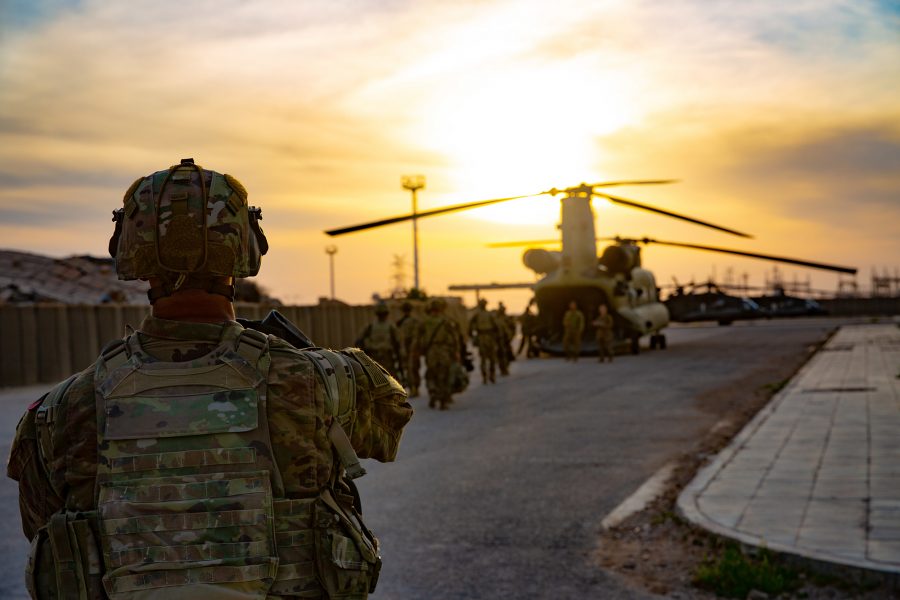The U.S.-led coalition is withdrawing from multiple small bases around Iraq, as even more rockets target American operating locations within the country.
U.S. forces demolished much of their share of the Al Qaim base near the border with Syria, and formally transferred the base to Iraqi Security Forces on March 17. Photographs showed U.S. troops pulling down tents and burning supplies, with Chinook helicopters airlifting an M777 Howitzer away from the base. Personnel at the base, which was used as a firing location to target Islamic State group forces in the region, will now relocate to consolidated locations in the country.
“Al Qaim served as a critical location in the fight against Daesh [another name for ISIS]. First, as the Iraqi Security Forces liberated the Al Qaim region from an evil presence, and later as a valuable base during the Battle for Baghouz, the last physical territory held by ISIS,” Brig. Gen. Vincent Barker, director of sustainment for Combined Joint Task Force Operation Inherent Resolve, said in a release. “Today’s transfer is possible thanks to the efforts and successes of our ISF partners.”
U.S. troops also will withdraw from other locations in the country, such as K-1 Air Base in Kirkuk and Qayyarah West near Mosul, NBC News reported.
Qayyarah, also known as Q-West, was a key operating location for U.S. mobility aircraft to resupply forces in the fight against ISIS for Mosul. USAF Airmen rebuilt the remote base’s runway to be able to support C-17 and C-130 operations in the surge.
As this consolidation occurs, U.S. operating locations are still being hit by rockets fired by local militias. On March 16, rockets hit a base south of Baghdad that hosts U.S. and NATO troops, VOA reported. There were no casualties. The attack follows similar incidents at Camp Taji, such as the March 11 attack that killed three people, including Oklahoma Air National Guard Staff Sergeant Marshal Roberts. U.S. officials have blamed Iranian proxy groups for the attacks.
